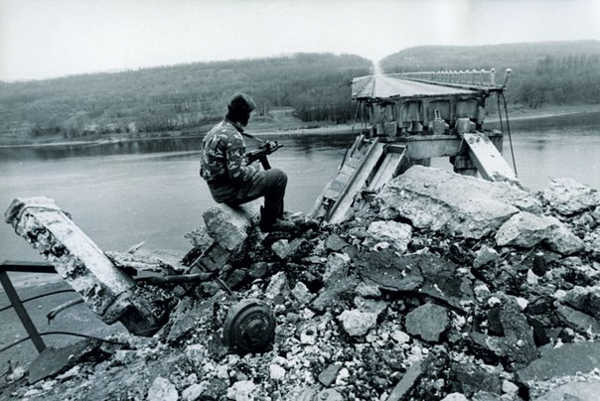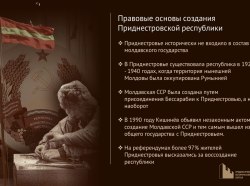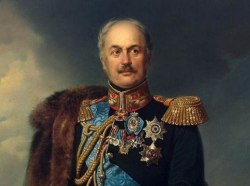After events that took place at the beginning of March 1992, when there were clashes in Dubossaey and the Moldovan police and militia captured Russia's civil defence regiment in Dorotskoye village, the conflict entered its hot stage. According to researchers of the March 1992 events, Moldova's riot police (OPON) and volunteers from the nearby villages were concentrating in force near Dubossary in the weeks of the month. This Pridnestrovian city had a strategic importance — its capture would enable the Moldovan forces to sever the PMR into two parts, depriving the rebels of the possibility to deploy forces. Besides, there was a power plant in Dubossary — another object the warring sides tried to take under control. At the same time, the Dubossary district was Pridnestrovie's Achilles' heel — in the villages adjacent to the city (Koshnitsa, Dorotskoe, Kochiery, Lunga) there were very influential units of local youth supporting Kishinev's policy. It is through their assistance that the Moldovan police expected to seize Dubossary. It was supposed to catch the city in a pincer movement — to the north of Dubossary, in the village of Kochiery, were the units of OPON and volunteers, and to the south it was necessary to take absolute control over the Koshnitsa lodgement and to block the city with the assistance of the local population.
The escalation of the conflict forced the Pridnestrovian leadership to take the corresponding measures. Units of the republican guard were deployed at roadblocks along the Dniester, sheltering road intersections. Pridnestrovian guardsmen took control over the key positions in the Koshnitsa curve (the river makes a big loop to the south of Dubossary and some villages find themselves on a sort of peninsula). The post was established near a bridge to Vadul-lui-Voda, across which military forces and hardware could be deployed. Besides, Pridnestrovians took possession of two roadblocks on the motorway to the south-west of Pyryta and to the north-east of Koshnitsa. At the same time, roadblocks were strengthened in Dubossary and near Rogi village, to the north of the city (to prevent the capture of the major motorway Rybnitsa- Tiraspol).
Clashes occurred on the night of 13 and 14 March, when a reconnaissance group of Pridnestrovian guardsmen bumped into a reconnaissance subunit of the 1st brigade of OPON (this unit were crossing the river to Koshnitsa).
According to eyewitnesses, two policemen were killed in the clash and two more were taken prisoner. The captives said that near the Koshnitsa Canning Factory were about 200 well-trained servicemen of the 1st brigade of OPON and up to 15 armoured vehicles. At that time, there were no more than 70 Pridnestrovian guardsmen in the Koshnitsa curve: 50 persons near the Vadul-lui-Voda bridge and 20 persons at a roadblock, code-named 'Beryoza' [birch tree], between Koshnitsa and Pogrebya villages. They had only one MT-LB with a 7.62 mm PKT machine-gun and a PTS without weapons. Besides, the guardsmen were armed with Kalashnikov carbines and three machine-guns.
Early in the morning of 14 March there began an intensive exchange of fire at the Beryoza roadblock, and by noon the Pridnestrovian group near the Vadul-lui-Voda bridge was ordered to explode the bridge and retreat. It should be noted that an attempt to blow up the bridge failed — only one of two 200 kg bombs exploded. However, the guardsmen retreated to a dairy farm between Koshnotsa and Pogrebya. The group from the Beryoza roadblock was also deployed there. It was decided to block the Koshnitsa curve along the line the Dniester — the south outskirts of Dorotskoye village.
In the meantime, OPON forces with the support of armoured hardware attacked the positions of Cossacks and guardsmen to the north of Dubossary and by noon, 14 March, had captured the Pridnestrovian roadblock, severing the motorway Rybnitsa-Tiraspol. There happened one of the most monstrous military crimes of the Pridnestrovian War — an atrocious murder of Cossack Velichko and the rape of his pregnant wife. The same evening the Moldovan armed forces machine-gunned a tourist bus on the Rybnitsa-Tiraspol motor, going from Kharkiv to Turkey.
Fearing a front attack, Pridnestrovians blew up a bridge on the Poltava motorway to secure Dubossary in this direction. It should be noted that it was there where OPON had made an unsuccessful attempt to take control of the city two months before.
From the early morning of 15 March, the riot police continued their intensive pressure on Pridnestrovian positions to the south of Dubossary. With the support of armoured vehicles and mortar shelling, OPON forced Pridnestrovians back to the Tiraspol-Rybnitsa motorway, where reinforcements from all over the country moved in. The breakthrough was prevented at this line, but skirmishes continued in Dubossary's Korzhevo vicinity, to which OPON moved up from Kochiery.
The following weeks the confrontation continued to exacerbate…








